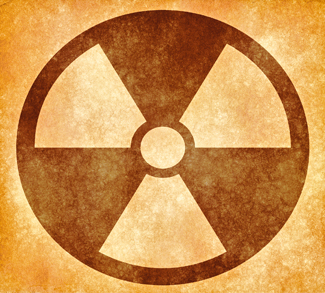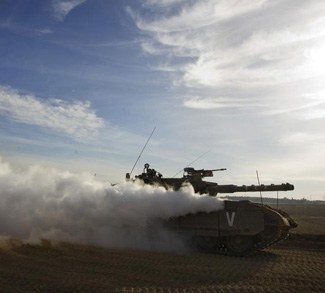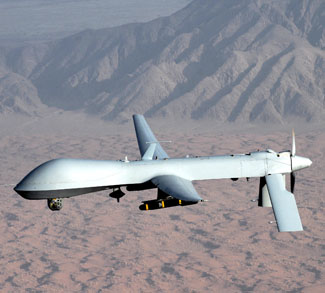During the Cold War, the primary threat to the United States (US) was the Soviet Union and its military capabilities in terms of conventional and unconventional weapons (including weapons of mass-effect or weapons of mass destruction [WMDs]).
Today, it is smaller states which are pursuing nuclear weapons programs. It is also feared that militant and terrorist groups might develop the capability in the future to detonate a nuclear device in the heart of the United States, and large and aspiring powers like China have begun augmenting it nuclear arsenal. As these (re-)emerging threats have been recognized by US allies in Europe, other states like the United Kingdom (UK) and France have realized the need to maintain and possibly even strengthen their nuclear forces. The US’ operationally deployed strategic nuclear weapons (ODSNWs) have been reduced significantly in the past 15 years, in accordance with the Moscow Treaty (2002), with further reductions planned and more reductions initiated since the end of the Cold War with regards to its non-strategic nuclear weapons. Continued reductions comes at a time when Russia has begun to revamp its non-strategic nuclear weapons program in an attempt to adapt to foreseeable threats and prepare for future uncertainty in both conventional and unconventional terms. If the United States is to keep pace with its allies and its potential enemies, it needs to realign its strategic commitments with the aim of preparing itself for confronting the same threats as have the UK, France, Russia and China, as well as those states such as Iran and North Korea that will eventually possess nuclear weapons capabilities.
Rather than outright dismissing its need for nuclear weapons, Washington must reorient its understanding and efforts in a manner that enables it to meet the demands placed on it in the 21st century. It also must see to its obligation of maintaining national and international security in the context of Cold War era-threats that have not entirely dissipated. In short, nuclear weapons stockpiles should not be reduced to the point that the U.S. finds herself falling behind other states. An understanding must also be made of the changing nature of the international system and the complexity of the international security environment. During the Cold War, the course of weapons delivery could be measured from the Soviet Union to US soil in mere minutes. While this has not changed, the extent to which the US might face the delivery of nuclear weapons from places other than Russia today has increased. A newer and more offensive-defensive oriented nuclear weapons program that boasts diversified delivery modes and weapons types will greater enhance the flexibility of the U.S. and its weapons portfolio in an increasingly uncertain age defined by a rich body of threats. The US’ responses should not only measure up to those threats – its capabilities should exceed them.
Strategy and Policy
In April 2009, President Barack Obama delivered a speech in which he outlined his vision for a world free of nuclear weapons. He called for the formation of a global summit regarding nuclear security and ways in which the U.S., with the help of its allies and friends, could prevent the spread of nuclear weapons and prevent them from falling in the hands of the wrong people. A goal that might not be realized in his lifetime was set in motion in 2010 with the Obama Administration concluding the Nuclear Posture Review (NPR). The NPR presents ways to reduce the dangers of nuclear weapons while “advancing the broader security interest of the United States and its allies.” The policy was set in motion with other states but does not apply in the context of terrorists and terrorism. The broader aim of the US nuclear policy to ensure the strengthening of the nuclear non-proliferation regimes by beginning with the reduction of nuclear arsenals in the U.S. and in Russia, and expanding this to other nuclear weapons states.
The US has stated that it is not pursuing the development of new nuclear weapons nor is it looking to engage in new nuclear missions.
The aim of this US nuclear weapons policy works in concert with its national security strategy (NSS) and the role that nuclear weapons play in the strategic vision outlined in the document. The US has stated that it is not pursuing the development of new nuclear weapons nor is it looking to engage in new nuclear missions. Deputy Secretary Frank A. Rose remarked during a speech delivered at The Pryzbyla Center, Catholic University of America in Washington, DC that, “we have committed not to use or threaten to use nuclear weapons against non-nuclear weapon states that are party to the NPT and in compliance with their nonproliferation obligations; and we have clearly stated that it is in the US interest and that of all other nations that the nearly 68-year record of non-use of nuclear weapons be extended forever.”
In 2012, President Obama remarked in Seoul that, “[w]e can already say with confidence that we have more nuclear weapons than we need. I firmly believe that we can ensure the security of the United States and our allies, maintain a strong deterrent against any threat, and still pursue further reductions in our nuclear arsenal.” The administration has repeatedly emphasized that the way forward in its nuclear weapons strategy is to bilaterally reduce its nuclear arms. The new START treaty, soon to enter its fifth year, seeks to reduce the ODSNW of both the US and Russia to levels not seen since the Eisenhower Administration. The US and Russia are working together to apply reductions to all categories of nuclear weapons: strategic, non-strategic, deployed, and non-deployed.
Analysis
The US Department of Defense (DoD) recently redacted one of its classified papers and made it public. The document outlines the some of the major changes that have taken place in the international security environment in the past few decades and the sort of impact that it has and might have on US national security interests. The majority of the document “sizes” the current political and military force of the US and presents recommendations for the management of risk by the US and how it should manage its nuclear “posture” in the coming years.
The US has simultaneously addressed the need to reduce its strategic nuclear arsenal and meet its obligations under Article VI of the Nonproliferation Treaty. It is estimated that the US requires approximately 1,700 to 2,200 ODSNWs to meet its current security needs and ensure the security of its allies and friends. The sizing methodology differs from that which was used during the Cold War. In the words of the document: “The size of the US nuclear force is now based on the ability of the operationally deployed force, the force structure, and the supporting nuclear infrastructure to meet a spectrum of political and military goals.”
Precisely what that spectrum is comprised of is not clarified. While the U.S. was engaged in a wide range of political and military goals during the Cold War, those goals have changed radically with the international security landscape and the political order associated with it. The goals alluded to in the document have no doubt changed a number of times. Thus, the DoD needs to make clear what it expects the future of its political and military goals to look like and take into consideration how the composition of its strategic and non-strategic nuclear arsenals will look in accordance with them. It is difficult to surmise exactly how these goals might fluctuate in the near and distant future. Indeed, this is no small challenge to assess; however, if Washington is to make certain that its nuclear forces can relate to its objectives as established through its national policies and strategies, it needs to first establish the degree to which its forces can change with its political and military goals. As the New START treaty attests, the expected outcomes of the treaty cannot be realized overnight. Roughly how such a treaty and those that may follow are to keep pace with a radically changing security environment requires further attention and in-depth consideration by those formulating them.
Notwithstanding US plans to reduce the number of US nuclear warheads further and commit to its obligations in Article VI of the NPT, as well as maintain its bilateral commitment with Russia, the extent to which the U.S. is actually limited in its ability to reduce these numbers requires further in-depth analysis. Nuclear weapons have played a key role in the preservation of peace since the beginning of the Cold War, largely through deterrence and the framework of mutual assured destruction (MAD), and continue to play just as critical a role. The changing security order since the Cold War has not invalidated the role of nuclear strategic or non-strategic nuclear weapons.
With both continuity and discontinuity in the international security environment since the 1990s, a number of key issues related to the nuclear “posture” of the US can be noted. During the Cold War, the US maintained a nuclear arsenal that was deemed sufficient in deterring an attack by the Soviet Union, which was then the primary adversary of the United States. Maintaining nuclear arsenals rests in the idea that, “nuclear and conventional capabilities [were] sufficient to convince any potential aggressor that the costs of aggression would exceed any potential gains that he might achieve.” What needs to be called into question now is the ability of other states to fill the same or a similar role to the one occupied by the Soviet Union for decades. It should be no surprise that a number of states in the contemporary world meet a short list of criteria necessary to move into the position of the former-Soviet Union.
Russia is not the only state that assumes this position. The primary security objective of the US for decades was to contain the expansion of Soviet Communism while concurrently preventing nuclear aggression and outright war. While the former is no longer a threat, the latter is. Whether states retaining nuclear weapons capabilities are currently hostile or seen as threats to the US and international security should bring little weight to the issue. Instead, whether or not a state has nuclear weapons capabilities is the requisite factor in the decision on the part of the US to maintain its nuclear arsenals and delivery methods.
As noted during the Clinton Administration, emerging adversaries presented new threats to the U.S. The NSS Report of 1998 noted that, “a number of states still have the capabilities and the desire to threaten our vital interests […] in many cases, these states are also actively improving their offensive capabilities, including efforts to obtain or retain nuclear, biological, or chemical weapons, and, in some cases, long-range delivery systems.” It was further noted that, “[w]eapons of mass destruction pose the greatest potential threat to global stability and security. Proliferation of advanced weapons and technologies threatens to provide rogue states, terrorists, and international crime organizations the means to inflict terrible damage on the United States, its allies and US citizens and troops abroad. We must continue to deter and be prepared to counter the use or threatened use of WMD[s], reduce the threat posed by existing arsenals of such weaponry and halt the smuggling of nuclear materials.”
During the 1990s, China was not seen as the sort of threat that it has been characterized as under the Obama Administration. Having noted that the US cannot be sure that it will not require nuclear weapons to deter China or other states with nuclear weapons aspiration in the future mirrors the same uncertainty that the US currently faces.
Conclusion
In just a few decades, the U.S. has committed to the reduction of nuclear warheads to a level not seen since the 1950s. This period of reduction is therefore quite a historic one for the US and figures positively as a model for the reduction of arsenals by other states. Anti-proliferation of nuclear warheads, however, has been strained by the need to have such programs operate within and therefore harmonize with the bilateral covenant that exists between the U.S. and Russia. The aims of reduction, still, to many necessitates recasting amid a backdrop of nuclear flexibility, including strategic and non-strategic nuclear weapons capabilities backed by an ability to deliver these weapons through diverse means. The most consistent aspect of the current international security environment is change and uncertainty. Both of these elements are primary expedients of threat and challenges for which the U.S. should be constantly prepared and not caught off-guard as a result of overt and idealistic hopes of reducing nuclear arms to the point that US national and international security are jeopardized.
The opinions, beliefs, and viewpoints expressed by the authors are theirs alone and don’t reflect any official position of Geopoliticalmonitor.com.




